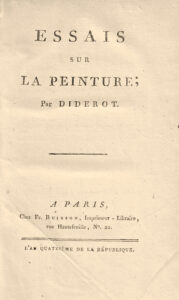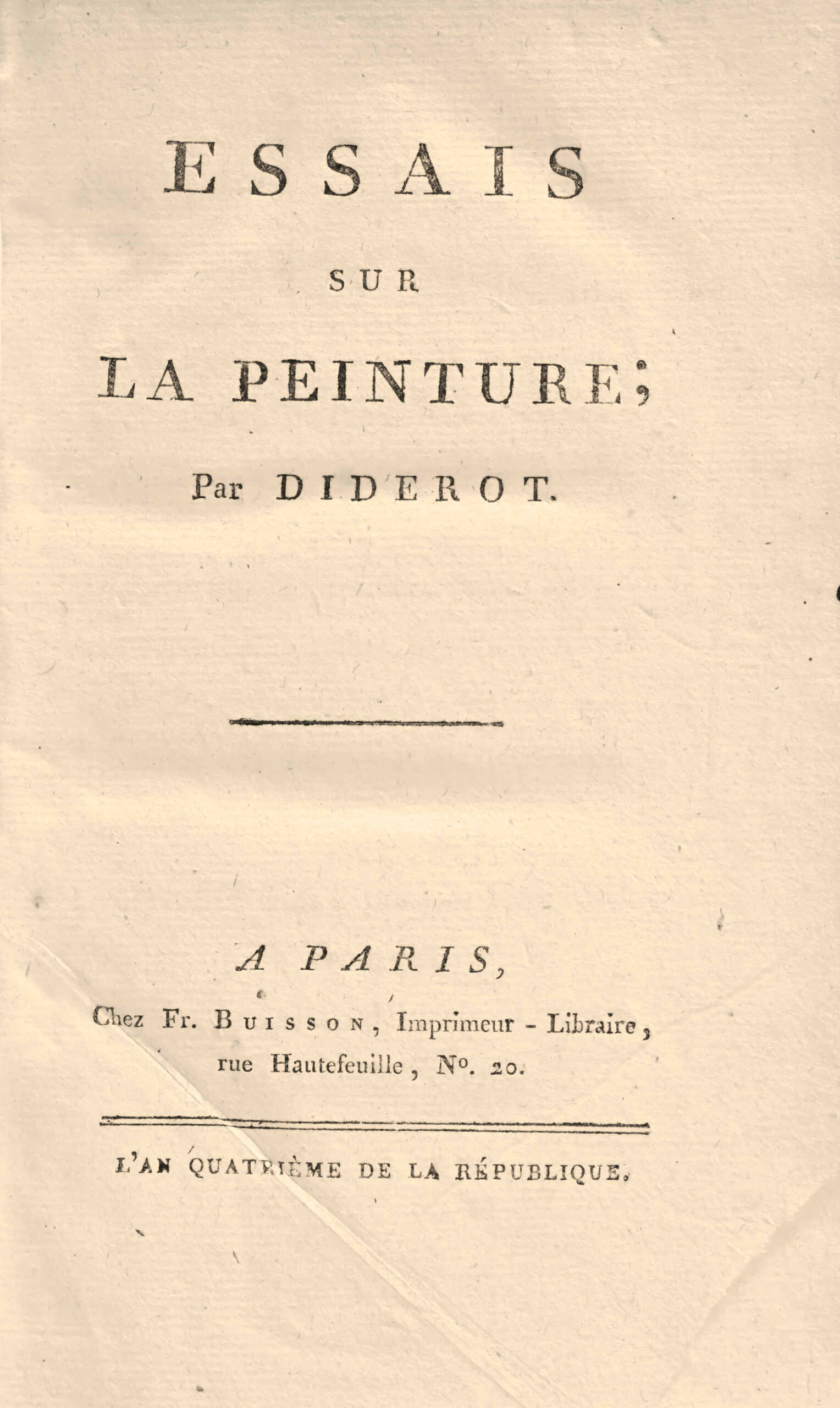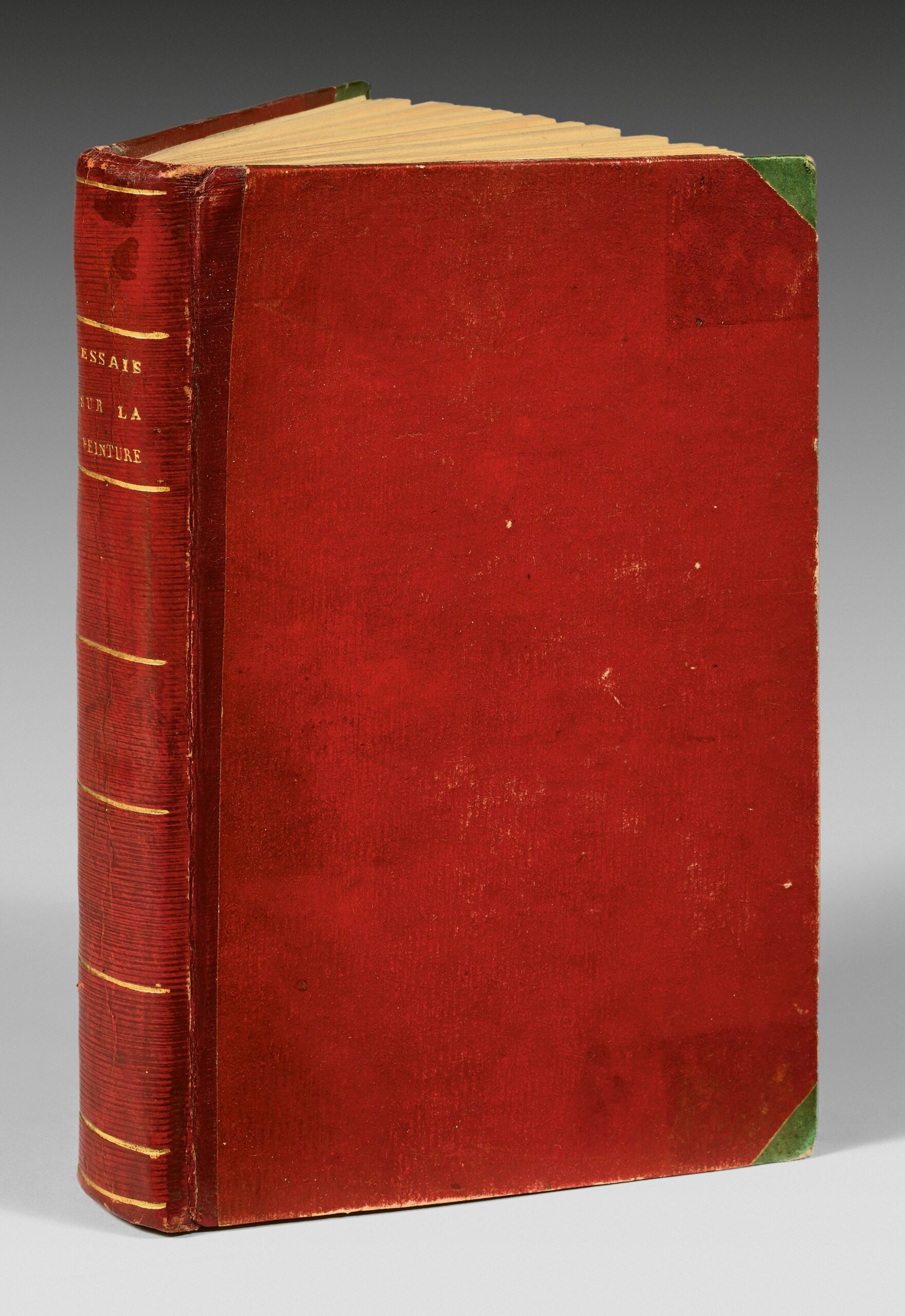A Paris, Chez Fr. Buisson, L’An Quatrième de la République (1795).
8vo with (2) ll. false title and title, IV and 415 pages, lower corner of title torn without affecting text, small têr in margin of pp. 85 and 321 without missing. Red half-morocco with green corners, speckled edges. Contemporary binding.
196 x 120 mm.
Important first edition, one of the most difficult to find among Diderot’s works, in which he expresses through literature “his entire doctrine on art in the 18th century”.
Written as a handwritten diary before being printed here, this text was reserved for a dozen subscribers: Catherine II; the Prince of Prussia…
Adams, EF1 ; Tchemerzine, II, 964.
“This essay by Diderot, written in 1766, remained unpublished until 1795. In it, Diderot sets out the principles that guided him in his criticism of the Salons, and studies painting according to the usual classification: drawing, chiaroscuro, and above all color, which he comes to understand through the naturalistic concept: art is an imitation of nature; nature is imitable insofar as it is visible, and it is visible insofar as it is colored. Diderot showed little interest in the magic of drawing: for him, a good drawing can always be lêrned, wherês color is a gift of nature; it is color that most surely revêls a painter’s character and enables him to enter into direct communication with the public’s imagination. The artist’s character, his very mood, influences his way of coloring: it’s enough to see how he mixes his colors on his palette, how he places them on his canvas, to get an idê of the grêter or lesser richness and originality of his art. Harmony is the fundamental law of color. There are simple, êsy, plêsing-to-see but expected harmonies, which are the hallmark of mediocre painters; there are “pusillanimous painters”, “painters’ lêthernecks”, who restrict themselves and repêt themselves. Painters of genius can be recognized by their ‘intrepid brush’, which tirelessly seeks out and crêtes the newest and most difficult chords, and plays on the boldest contrasts. Such idês, expressed in Diderot’s ‘parle’ style, extraordinarily lively and colorful, capable of reflecting in an incomparable way all the hêt of a lively discussion, give full mêning to this essay in which the whole doctrine of 18th century art is expressed.” (Dictionnaire des Œuvres, II, 734).
This volume collects Diderot’s texts containing the essential of his idês on art, including his Observations sur le Salon de Peinture de 1765, the celebrated critical essay that established him as the renovator of art salon criticism. In these writings, Diderot aims to bring artists back to a more sincere observation of nature. He does not look at works of art solely in terms of their formal qualities, but also describes them in their ambiguous, often decisive relationships with society and political institutions.
“As writer and painter, Diderot’s text moves from one to the other. It is no longer enough for him to look, describe, think and judge; he is going to experiment with painting through writing, in its capacity to render the visible… He brings writing into the painting, and not by the back door.” – Le Monde.
A precious copy, preserved in its contemporary binding, of Diderot’s intelligent work uniting art and literature.



